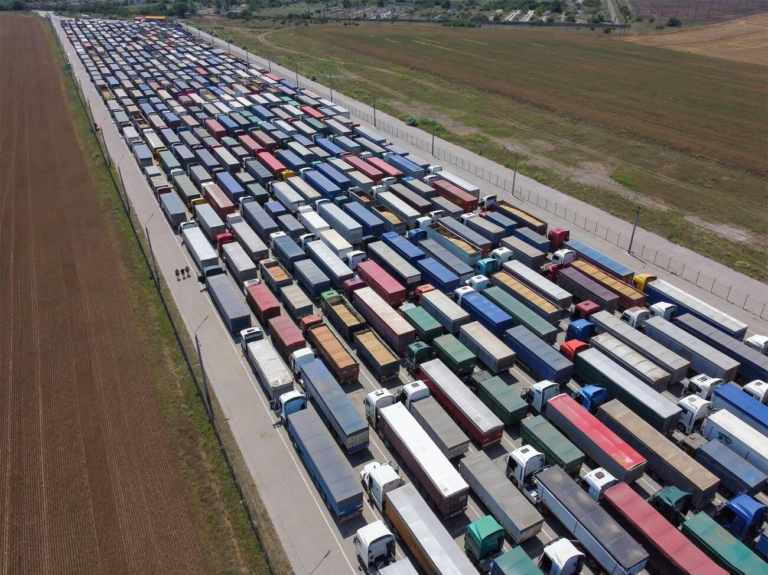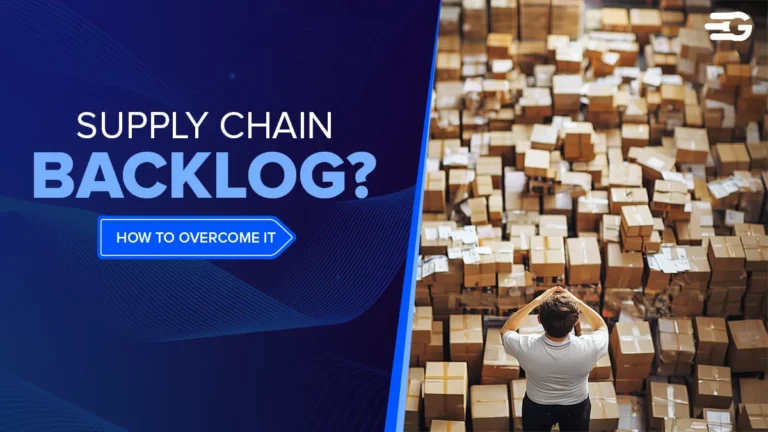Supply Chain Collaboration: Strategies, Benefits, and Technology
Table of Contents
Supply chains work best when companies share information and align their goals. Businesses that collaborate with suppliers, logistics providers, and partners can cut costs, reduce delays, and improve service. But many struggle with miscommunication, data silos, and outdated systems.
How can businesses overcome these hurdles? This guide breaks down the strategies, technology, and best practices that drive effective supply chain collaboration.
What is Supply Chain Collaboration?
Supply chain collaboration is when businesses share data, processes, and resources to improve efficiency. Instead of operating in silos, companies align their logistics, procurement, and inventory management to reduce delays and costs.
A retail brand working closely with its suppliers and logistics partners. If a sudden spike in demand occurs, like during a holiday sale, the retailer can quickly share sales data with suppliers. This allows them to adjust production and ensure warehouses stay stocked, preventing lost sales and customer frustration.
When done right, it leads to faster deliveries, fewer errors, and better customer service. Companies can anticipate disruptions, adjust to demand changes, and optimize their operations. This approach ensures that every part of the supply chain works in sync, reducing inefficiencies and improving overall performance.
Why is Supply Chain Collaboration Important?
When companies don’t share information, supply chains slow down, costs rise, and mistakes pile up. A well-connected supply chain keeps things moving, reduces waste, and gives businesses a competitive edge.
- Better Visibility: Imagine tracking a package in real time. Now, apply that to entire shipments. When businesses know exactly where their goods are, they can plan better, avoid surprises, and keep customers happy.
- Lower Costs: Wasted inventory, last-minute shipping, and excess storage all add up. Sharing data helps businesses avoid unnecessary expenses by improving demand forecasting and resource allocation.
- Faster Operations: Delays happen when suppliers, manufacturers, and distributors don’t coordinate. A connected system ensures everything flows smoothly, reducing bottlenecks and speeding up deliveries.
- Stronger Risk Management: Supply chain disruptions are inevitable, weather delays, factory shutdowns, or material shortages can throw everything off. Quick access to shared data allows companies to react faster and minimize damage.
Collaboration isn’t just about working together. It’s about making every part of the supply chain smarter, faster, and more cost-effective.
Types of Supply Chain Collaboration
Companies work together in different ways depending on their goals. Here are three common models:
1. Transactional Collaboration
This is all about bulk orders for better pricing. Businesses work together on purchases but don’t share much data. It’s simple and cost-effective.
2. Tactical Collaboration
Here, companies sync forecasts and inventory plans. The goal is to avoid stockouts and excess inventory. It’s a step up from transactional collaboration, with more data-sharing and planning.
3. Strategic Collaboration
This is the deepest level of partnership. Businesses share real-time data, risks, and decision-making. It leads to better visibility, fewer delays, and a more agile supply chain.
Companies that collaborate strategically often see stronger supply chains and better efficiency.
Challenges in Supply Chain Collaboration & How to Overcome Them
Even with the best technology and partnerships, supply chain collaboration comes with obstacles. Addressing these challenges early ensures smoother operations and stronger relationships.
Lack of Trust
Many companies hesitate to share critical data, fearing competitors might misuse it. This lack of trust slows down decision-making and limits efficiency.
Solution: You should establish clear agreements, define roles, and set transparent performance metrics. Long-term partnerships based on consistent reliability help build confidence between stakeholders.
Poor Data Sharing
When supply chain partners use different systems or don’t share real-time updates, delays and miscommunication occur. Without accurate data, companies struggle to manage inventory and forecast demand.
Solution: Use cloud-based platforms that provide instant access to shipment status, stock levels, and order updates. This ensures all parties work with the same information, reducing errors and improving coordination.
Technology Gaps
Smaller businesses or companies with outdated systems often struggle to integrate with modern supply chain tools. Without automation, manual processes slow down efficiency and increase errors.
Solution: Invest in AI, IoT, and automation tools bridges this gap, enabling predictive analytics, smart tracking, and faster decision-making. Choosing scalable technology that integrates with existing systems ensures a smoother transition.
Regulatory Issues
Global supply chains must navigate trade policies, tariffs, and compliance requirements, which can change frequently. Businesses operating across borders risk penalties and shipment delays if they don’t stay compliant.
Solution: You should regularly update compliance strategies, track policy changes, and work with legal experts to ensure they meet all regulations.
By tackling these challenges head-on, businesses can create a more efficient, transparent, and resilient supply chain network.
Role of Technology in Supply Chain Collaboration
Technology keeps supply chains connected, efficient, and transparent. It eliminates delays, reduces errors, and helps businesses make better decisions.
- Cloud Platforms – Everyone in the supply chain gets real-time access to inventory, shipments, and orders, making coordination seamless.
- AI & Machine Learning – These tools predict demand, optimize inventory, and prevent stock shortages before they happen.
- Blockchain – Secure, tamper-proof records ensure transparency in transactions, reducing fraud and paperwork.
- IoT Sensors – Track shipments in real time, monitoring location, temperature, and handling conditions to prevent damage.
When businesses use the right technology, they gain better control, reduce risks, and improve efficiency across their supply chain.
Best Practices for Successful Supply Chain Collaboration
Strong supply chain collaboration depends on clear goals, the right tools, and open communication. Here’s how businesses can make it work:
- Align Goals – Set clear expectations, performance metrics, and responsibilities to ensure everyone moves in the same direction.
- Use the Right Technology – Automate routine tasks, improve visibility, and streamline operations with AI, cloud platforms, and real-time tracking.
- Communicate Clearly – Regular check-ins and updates help prevent misunderstandings and keep everyone informed.
- Be Transparent – Sharing accurate data builds trust and allows partners to make informed decisions.
When businesses work as a team, supply chains run smoothly, costs go down, and efficiency improves.
Businesses Benefiting from Supply Chain Collaboration Software
Companies that use supply chain collaboration software see improved efficiency, cost savings, and stronger partnerships. A great example is Essentra, a global manufacturer that struggled with manual processes, inefficient freight selection, and poor data sharing.
By partnering with us, Essentra automated freight procurement, invoice management, and shipment tracking. This reduced errors, improved cost visibility, and streamlined workflows. The company achieved a 4.34% reduction in freight spend and faster processing times, leading to better vendor participation and improved decision-making.
This case highlights how the right technology and transparency can transform supply chain collaboration, helping businesses reduce costs and enhance operational efficiency.
Future Trends in Supply Chain Collaboration
Supply chains are rapidly changing, driven by technological advancements and a focus on sustainability. Embracing these trends can provide businesses with a significant competitive advantage.
AI-Powered Automation
Artificial intelligence (AI) is enhancing supply chain efficiency. According to McKinsey, applying AI-driven forecasting can reduce supply chain errors by between 20% and 50%, leading to a reduction in lost sales and product unavailability of up to 65%.
Blockchain for Transparency
Blockchain technology offers secure and immutable transaction records, enhancing transparency and trust within supply chains. PwC highlights that blockchain can reduce costs and complexity, improve security and stability, and decrease fraud within supply chains,
IoT for Real-Time Monitoring
The Internet of Things (IoT) enables real-time tracking of shipments, monitoring factors like location and condition. This technology enhances supply chain visibility, allowing for more responsive and efficient operations. While specific statistics vary, the integration of IoT in supply chains is widely recognized for improving efficiency and reducing losses.
Sustainable Partnerships
Sustainability is becoming a priority in supply chain management. Companies are collaborating to reduce emissions and adopt eco-friendly practices. For instance, blockchain’s ability to track provenance can contribute significantly to global GDP, reflecting its potential in promoting sustainable and transparent supply chains.
By integrating these trends, businesses can enhance efficiency, transparency, and sustainability in their supply chains, positioning themselves for success in a rapidly evolving market.
Conclusion
Supply chain collaboration saves time, cuts costs, and improves service. Companies that share data, invest in technology, and build strong partnerships stay ahead.
As businesses push for faster and smarter supply chains, those that collaborate effectively will lead the way. Are you ready to strengthen your supply chain?
FAQs
How does collaboration reduce costs?
Collaboration cuts costs by reducing inventory waste, avoiding stockouts, and optimizing shipments. Real-time data sharing prevents last-minute shipping fees and excess storage costs. Better coordination with suppliers and logistics partners eliminates delays and unnecessary expenses.
What are the biggest hurdles in collaboration?
The biggest challenges are lack of trust, poor data sharing, and outdated systems. Many businesses hesitate to share data, use incompatible platforms, or struggle with compliance issues. Clear agreements, real-time visibility, and standardized systems help overcome these barriers.
How do you measure collaboration effectiveness?
Track cost savings, on-time deliveries, inventory turnover, and error rates. Real-time analytics and visibility tools help measure efficiency, decision-making speed, and partner reliability.





